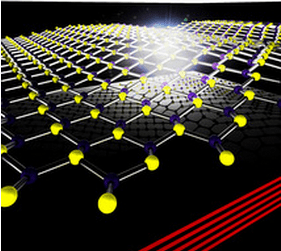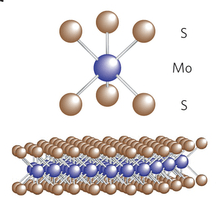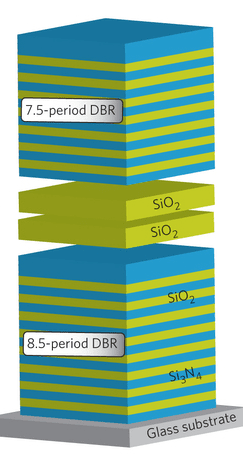New Half-Light Half-Matter Quantum Particles Created By Physicists
With an objective to develop computing and communication technologies on the basis of quantum properties of light and matter, the researchers from City College of New York have created half-light, half-matter particles. They were able to discover these particles in atomically thin semiconductors that consist of two-dimensional (2D) layer of molybdenum and sulfur atoms. This arrangement has same resemblance to that of two-dimensional atomic crystals of grapheme and transition-metal dichalcogenides in terms of strong interaction with light.

The team of physicists led by Dr. Vinod Menon inserted the 2D layer of molybdenum and sulfur atoms in a light trapping structure in order to discover these new composite quantum particles. By embedding the two-dimensional materials into optical microcavities, researchers were able to control the interaction of the materials with light. The strong coupling regime was achieved when the interaction rate was more than the dissipation rate from the light and matter entities. After that, half-light, half-matter bosonic quasiparticles also known as microcavity polaritons were formed in a two-dimensional atomic crystal of molybdenum disulphide (MoS2). The strong coupling was possible due to the presence of dielectric microcavity at room temperature.

Chemical structure of MoS2 monolayer
The development of practical polaritonic devices through this research will have the benefits of disorder-free strong coupling of light and matter. This discovery may also lead to the development of practical platforms for quantum computing and devices such as logic gates, signal processors, et al.

Diagrammatic representation of the microcavity structure
The research paper titled Strong light–matter coupling in two-dimensional atomic crystals was published in the journal Nature Photonics on December, 23. The research of the physicists was funded by the US Army Research Laboratory's Army Research Office and the National Science Foundation.
Source: <a href="https://www.ccny.cuny.edu/news/vinod-menon.cfm" target="_blank" rel="nofollow noopener noreferrer">News | The City College of New York</a> | #-Link-Snipped-#
The team of physicists led by Dr. Vinod Menon inserted the 2D layer of molybdenum and sulfur atoms in a light trapping structure in order to discover these new composite quantum particles. By embedding the two-dimensional materials into optical microcavities, researchers were able to control the interaction of the materials with light. The strong coupling regime was achieved when the interaction rate was more than the dissipation rate from the light and matter entities. After that, half-light, half-matter bosonic quasiparticles also known as microcavity polaritons were formed in a two-dimensional atomic crystal of molybdenum disulphide (MoS2). The strong coupling was possible due to the presence of dielectric microcavity at room temperature.
Chemical structure of MoS2 monolayer
The development of practical polaritonic devices through this research will have the benefits of disorder-free strong coupling of light and matter. This discovery may also lead to the development of practical platforms for quantum computing and devices such as logic gates, signal processors, et al.
Diagrammatic representation of the microcavity structure
The research paper titled Strong light–matter coupling in two-dimensional atomic crystals was published in the journal Nature Photonics on December, 23. The research of the physicists was funded by the US Army Research Laboratory's Army Research Office and the National Science Foundation.
Source: <a href="https://www.ccny.cuny.edu/news/vinod-menon.cfm" target="_blank" rel="nofollow noopener noreferrer">News | The City College of New York</a> | #-Link-Snipped-#
0
